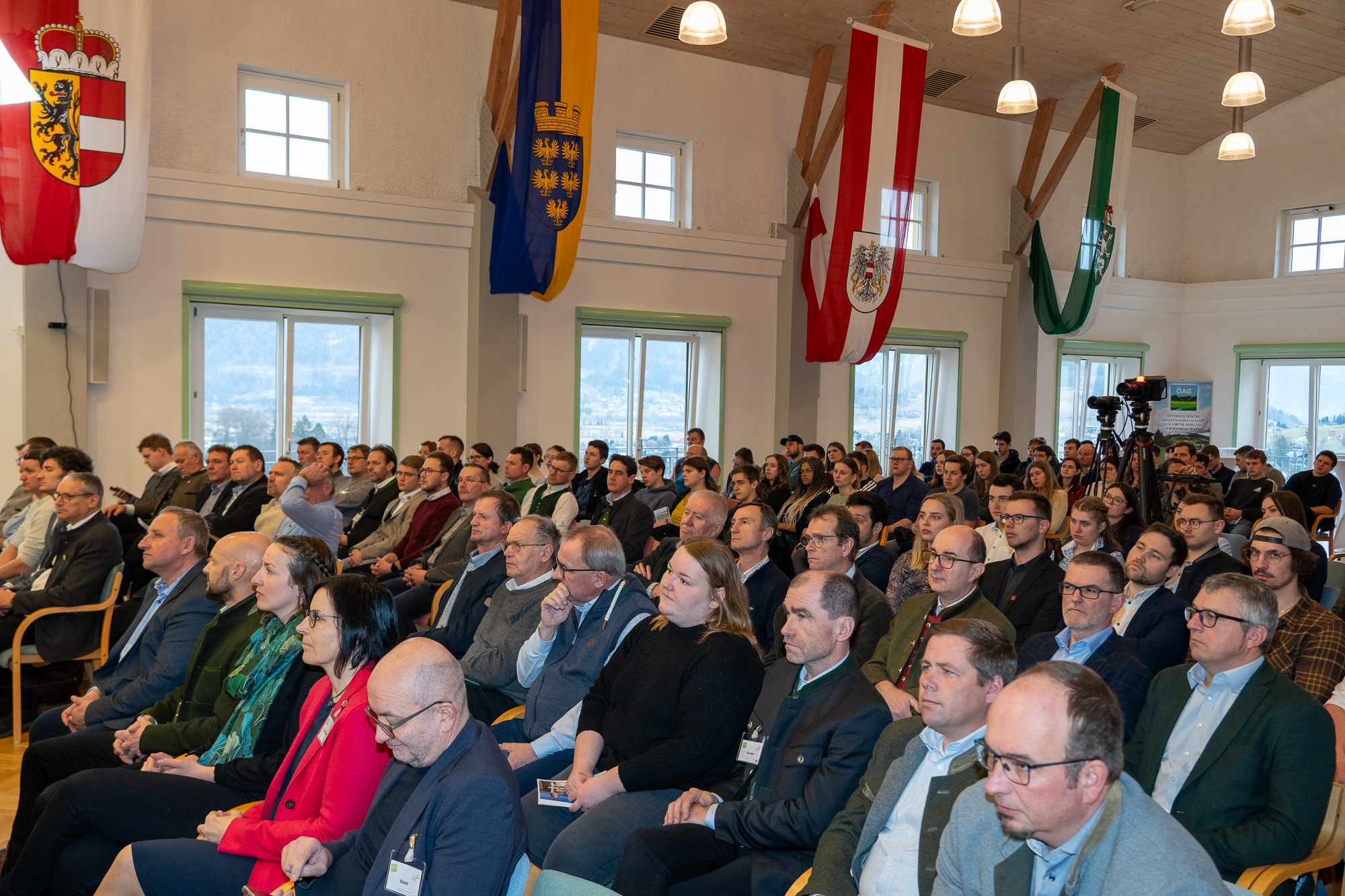Inflation, new funding conditions and the associated demands for more climate and environmental protection are influencing grassland and livestock farming. The very well-attended winter conference at the HBLFA Raumberg-Gumpenstein on February 1, 2024 offered an intensively used platform for discussions and exchange in order to find sustainable and practical solutions for agriculture.
In the opening lecture, Federal Minister Norbert Totschnig presented his strategies for the further development and support of Austrian agriculture. Quality production in family farms and the supply of society with high-quality, regionally produced food will remain the focus of Austrian agricultural policy. “We will provide every innovative company with the best possible support in their business development,” said Federal Minister Totschnig.
He also emphasized that it makes no sense to portray Austrian animal husbandry in a bad light and at the same time import products with demonstrably less favorable environmental impacts from countries with lower standards. Our beautiful cultural landscape is valued by society and is also the basis for other important economic sectors such as tourism. Together we want to do everything we can to continue the quality strategy.
LK -Steiermark President Franz Titschenbacher addressed the tension between sustainability and competitiveness. Farms need planning security when it comes to business development because, for example, investments in stables are generational projects.
The importance of solidarity between producers and agriculture became clear in the presentation by Bio-Austria chairwoman Barbara Riegler . Despite inflation, organic sales remained high in Austria, but in many other countries they have declined significantly. Great efforts are currently being made to position organic food even more strongly in public catering. In the important export market of Germany, we are also working on new marketing strategies and our own organic logo.
Micaela Schantl, marketing manager at AMA-Marketing, highlighted the development of plant-based milk and meat substitute products. Although this is growing among the youth and urban population, it is still very limited at 3 and 1% of the market volume. The subsequent panel and audience discussion provided space for an intensive exchange.
The following block changes in the beef market and innovative projects such as “Veal rosé” and “ALMO”. These topics highlighted opportunities to strengthen competitiveness and develop new market potential.
Thomas Guggenberger impressively demonstrated how important climate protection measures In his previous day, he highlighted the contribution that cattle farming has already made to achieving climate goals and further optimization potential.
The next block focused on the practical implementation of climate and environmental protection measures . Experts shared their insights and experiences on topics such as the climate impact of agriculture, economic viability and eco-efficiency as well as sustainable and efficient strategies in milk production. Furthermore, options for green space management were presented using the example of sorrel control using highly innovative “spot spraying”, which can contribute to the sustainable design of agriculture. Breeding strategies to improve the climate efficiency of cattle were covered in this block as well as the basics of the climate impact of agriculture.
Afterwards, an excursion to the research area of the HBLFA Raumberg-Gumpenstein was offered: There were insights into current research work on the following topics: methane measurements in cattle, possibilities and limits of digitalization and fattening of dairy cattle. With a “get-together sponsored by HBLFA Raumberg-Gumpenstein “, this year’s winter conference ended comfortably with us.
Download the program booklet for the 2024 winter conference (all events)
Pictures from the grassland and livestock management day as part of the 2024 winter conference in Raumberg-Gumpenstein
















































